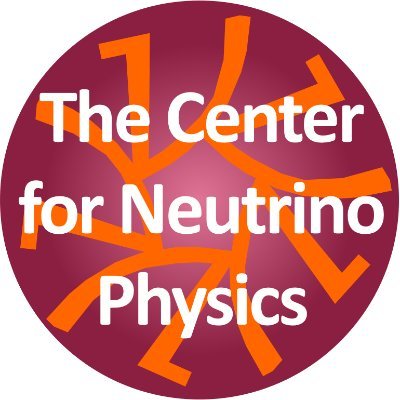Part 1 of 2 Parts
There is a shortage of potable water around the globe. Hundreds of million people are at risk. Only about two and a half percent of the water on Earth is fresh. Demand for drinking water is estimated to exceed supply by trillions of cubic yards by 2030. Desalinization plants which remove the salt from seawater could help supply the fresh water that is desperately needed.
However, desalinization plants are among the most expensive ways of creating drinking water. They pump huge volumes of water across membranes at high pressure which is extremely energy intensive.
One radical solution could be the use of barges containing desalination systems. Powered by nuclear reactors, these barges could travel to islands or coastlines struck by drought or natural disasters to supply them with drinking water and energy. Mikal Bøe is the chief executive of Core Power. He said, “You could have them moving around on an intermittent basis, filling up tanks.”
This may sound like a fantasy, but the U.S. Navy has supplied desalination services in the past with the help of its nuclear-powered ships. Russia already has a floating nuclear power station that was designed to power desalination facilities.
There are about twenty thousand desalination plants around the world. Almost all of them are onshore. The majority are located in Saudi Arabia, the United Arab Emirates and Kuwait. Desalination plants are located in the U.K., China, the U.S., Brazil, South Africa, Australia, and other countries. Some engineers claim that it might be cheaper to position desalination technology offshore because the seawater can be more easily pumped aboard.
For decades, engineers have imagined floating nuclear powered desalination systems. Core Power intends to use vessels like small container ships, but stack containers on board filled with desalination technology. A nuclear reactor onboard the vessels would supply the huge amount of power required.
Core Power’s floating nuclear desalination vessels could have power level outputs from five to seventy megawatts. A vessel with five megawatts of nuclear power could pump out thirty-five thousand cubic yards of fresh water every day.
In order to remove the salt from seawater, desalination systems pump treated seawater across a semi-permeable membrane at pressure. Osmosis is the movement of molecules in liquid across such membranes. Minerals are removed from water and a separate stream of very salty water called brine is generated. There are a variety of versions of this technology which have become ever more efficient. However, floating desalination systems are relatively rare. Saudi Arabia has just taken delivery of the first of three desalination barges which are the largest ever built.
Oisann Engineering has developed a desalination system called Waterfountain which they hope to sell to the expanding market for desalination. The company has various designs ranging from large ships to small buoys which all operate on the same principle. However, instead of using nuclear power, the OE desalination system utilize what is called subsea desalination which has been in use for decades.
Kyle Hopkins is the Chief Administrative Officer of Oisann Engineering. He said, “[The technology] was never commercialized because you still need subsea pumps to facilitate taking the water to the surface. We removed the pump.” He has declined to elaborate how the OE system works except for saying that their system takes advantage of the higher pressures on the seafloor to move water around which requires much less energy. He also mentioned that the pipeline from the vessel to shore could be raised so that gravity can assist the flow of water saving even more energy. Mr. Hopkins estimates that the technology could be roughly thirty percent more energy efficient than a conventional onshore desalination facility. OE is currently building a small prototype and hopes to install a commercial version in the Philippines in 2023.
Please read Part 2 next
Blog
-

Nuclear Reactors 1040 – Several Companies Are Working On Nuclear Powered Floating Desalination Plants – Part 1 of 2 Parts
-
Nuclear News Roundup June 16, 2022
Framatome and India have agreed to form a partnership to accelerate NPP safety studies neimagazine.com
Rosatom and Yakutia sign agreement for nuclear power projects power-technology.com
Simulated drill at Prairie Island Nuclear Plant scheduled for Tuesday kstp.com
UK trade body calls for action on nuclear-enabled hydrogen world-nuclear-news.org
Framatome and India have agreed to form a partnership to accelerate NPP safety studies neimagazine.com
Rosatom and Yakutia sign agreement for nuclear power projects power-technology.com
Simulated drill at Prairie Island Nuclear Plant scheduled for Tuesday kstp.com
UK trade body calls for action on nuclear-enabled hydrogen world-nuclear-news.org
-

Geiger Readings for June 16, 2022
Ambient office = 83 nanosieverts per hour
Ambient outside = 127 nanosieverts per hour
Soil exposed to rain water = 111 nanosieverts per hour
Jalapeno pepper from Central Market = 128 nanosieverts per hour
Tap water = 95 nanosieverts per hour
Filter water = 87 nanosieverts per hour
-

Nuclear Reactors 1039 – China Working On A System To Recycle Spent Nuclear Fuel
The Chinese Academy of Sciences Institute of Modern Physics has recently completed the prototype for what they call a “particle beam cannon” (PBC). The PBC is a new nuclear technology that promises to recycle dangerous radioactive waste. The PBC is a product of China’s huge investment in advanced nuclear energy systems. The breakthrough represented by the PBC prototype could help move China toward energy independence. It would further cement China’s global leadership in climate-friendly technology.
A nuclear fission power reactor produces radioactive spent fuel waste. Once removed from the reactor, the spent nuclear fuel is left in the cooling pool at the reactor site for a few years to let it cool off. Then it must be safely stored until it can be disposed of in a permanent geological repository. However, a proposed new type of reactor constructed with this PBC (formerly a proton accelerator) could recycle this spent nuclear fuel which would make it cheaper and safer to generate electricity with nuclear energy.
The design of the PBC, referred to as an accelerator-driven system (ADS), contains three parts. The first part is the proton accelerator which emits protons. The second part is the spallation target which contains the heavy elements to be split. The third part is the sub-critical reactor which contains the fuel which causes fission. The accelerator fires protons at a heavy element (usually bismuth) surrounded by a blanket of spent fuel and fresh fissile material (probably thorium-232 or uranium-238). The atoms of the heavy element in the target are split by the protrons emitted by the accelerator. Neutrons are emitted which are absorbed by the blanket of spent nuclear fuel. This turns the fuel into fissile heavy isotopes which means that it can be used again as fresh nuclear fuel. This process is self-terminating and cannot result in a chain reaction or a meltdown. The work of the Institute of Modern Physics is a major step towards a working ADS. It is a prime example of China’s huge investment in advanced nuclear energy systems resulting in new innovation.
While many nations have abandoned nuclear energy, China believes that fission is the key to a more secure future. Some analysts believe that nuclear fission power is more efficient than wind or solar. It does not emit particulate air pollution. Other than carbon dioxide emitted by construction and fuel preparation, nuclear power plants do not emit carbon dioxide while they are operating. China is ranked second in the world for daily oil consumption and its demand for ever more energy places it in a precarious position. As much as seventy percent of the oil consumed in China comes from imports. Most of these imports come from the Middle East and must move through numerous maritime chokepoints. It is estimated that China will spend four hundred and forty billion dollars between now and 2035 to construct at least one hundred and fifty more nuclear power plants. If China continues to develop ADS technology, the spent nuclear fuel from these new power plants can be recycled to produce even more needed energy. -
Nuclear News Roundup June 15, 2022
Nagasaki Survivor Denounces ‘Absolute Evil’ of Nuclear Bombs on Eve of Vienna Summit commondreams.org
Reactivating Nuclear Power Plant Near Volcano a Bad Idea, Geologists Say newsweek.com
Energoatom, Westinghouses Discuss Construction of new nuclear power reactors in Ukraine ukrinform.net
Japan’s Kishida to attend nuclear non-proliferation conference in August socialnews.xyz
-

Geiger Readings for June 15, 2022
Ambient office = 85 nanosieverts per hour
Ambient outside = 143 nanosieverts per hour
Soil exposed to rain water = 142 nanosieverts per hour
Honey Gold potato from Central Market = 82 nanosieverts per hour
Tap water = 91 nanosieverts per hour
Filter water = 80 nanosieverts per hour
-

Nuclear Weapons 781 – Neutrinos May Be Used To Monitory The Nuclear Fuel In Nuclear Submarines
There is concern that rogue nations might be able to remove nuclear fuel from a nuclear submarine in order to develop nuclear weapons. Neutrinos might be able to reveal attempts to carry out such a project.
Neutrinos are lightweight subatomic particles that are released from the reactors that power nuclear submarines. These particles could expose the alteration or removal of nuclear fuels for nefarious purpose. This possibility was recently reported in Physical Review Letters. This monitoring of neutrinos could be done remotely while a submarine is in a port with its reactor shut down.
In order to ensure that nations that are currently without nuclear weapons don’t develop them, international inspectors monitor the use of many types of nuclear technology across the globe. Nuclear submarines are a major concern. Many of them use highly enriched uranium. This is a potent type of fuel that could be weaponized fairly easily. However, submarines are protected from monitoring because of a loophole. Unlike nuclear power plants, nuclear submarines are used for secret military purposes. This means that physical inspections could infringe on the national security of the nation that owns a particular nuclear submarine.
Igor Jovanovic is a nuclear scientist at the University of Michigan in Ann Arbor. He said, “Neutrino-based methods can considerably reduce the intrusiveness by making measurements at a distance, without having to physically access the vessel.” He was not a member of the research team that published the report.
The antimatter variety of neutrinos, known as antineutrinos, are produced in great quantities from operating nuclear reactors. Neutrinos interact very weakly with other matter. This allows them to pass easily through solid material such as a submarine hull. A neutrino detector positioned near a submarine could reveal what is happening inside according to neutrino physicists Bernadette Cogswell and Patrick Huber of the Center for Neutrino Physics at Virginia Tech in Blacksburg who published the new report.
Submarines are often at sea, and they are hard to monitor with stationary instruments. In order to deal with this problem, the researchers found a solution. They decided to examine neutrinos produced by the decays of a variety of isotopes of chemical elements that remain after a reactor is shut down. A neutrino detector located in the water about sixteen feet below a submarine’s reactor could measure neutrinos produced by the decay of certain cerium and ruthenium isotopes. Those measurements could reveal whether nuclear materials had been removed from the reactor or swapped out.
This method of monitoring a reactor that has been shut off is “very clever” according to physicist Ferenc Dalnoki-Veress of the Middlebury Institute of International Studies at Monterey in California. However, the idea would still require acceptance from every country for detectors in submarine berths. Physicist Giorgio Gratta of Stanford University said that “Something like this would be so much better if it wouldn’t require cooperation.”
The monitoring of nuclear submarines may be more pressing in the near future. At this point in time all nations with nuclear submarines already have nuclear weapons. So, that means that currently, the issue is hypothetical. However, that will change soon. The U.S. and the U.K. are two nuclear weapons states. Last September, they entered into a cooperative security agreement with Australia to assist that country in obtaining nuclear submarines. Australia has no nuclear weapons.
There is very little suspicion that Australia would use these submarines as a cover for a nuclear weapons program. Cogswell said that “you still have to worry about the precedent that that sets.” As monitoring nuclear submarines becomes more important, she said “The question was how the heck to do that.” -
Nuclear News Roundup May 14, 2022
Rep. Mike Rogers concerned about U.S. response if Russia uses nuclear weapons yellowhammernews.com
SMR company NuScale pivots from development to delivery world-nuclear-news.org
Russia’s Medvedev Suggests U.S. Should Beg for Nuclear Arms Talks usnews.com
Experts Assess Implementation of International Conventions on Nuclear Emergency Response iaea.org
-

Geiger Readings for June 14, 2022
Ambient office = 80 nanosieverts per hour
Ambient outside = 144 nanosieverts per hour
Soil exposed to rain water = 151 nanosieverts per hour
English cucumber from Central Market = 123 nanosieverts per hour
Tap water = 157 nanosieverts per hour
Filter water = 143 nanosieverts per hour
-

Nuclear Reactors 1038 – New Reuters-Ipsos Poll Assesses U.S. Attitudes About Nuclear Power
About half of the citizens of the U.S. support the use of nuclear power to generate electricity. The nuclear industry in the U.S. has been in decline for decades. The Biden administration has been pouring billions of dollars of tax-payers money into nuclear power as a way to cut greenhouse emissions in the U.S.
A new Reuters/Ipsos poll was conducted last week to assess public opinion on the use of nuclear power. Forty five percent of U.S. citizens support nuclear power. Thirty three percent oppose it and twenty two percent are not sure what they think about it. Of those who support it, forty eight percent cited energy reliability, forty three percent citied a reduction in overall pollution. Only thirty nine percent said they favor it as a low-carbon energy source. Of those who oppose nuclear power, sixty nine percent worried about the danger of nuclear meltdowns and sixty four percent were concerned about the disposal of spent nuclear fuel.
The Biden administration believes that nuclear power is essential in fight climate change as well as boosting the reliability of the U.S. power grid. While the operation of a nuclear power plant emits little carbon dioxide, the construction of the plant and the mining and refining of nuclear fuel do emit a great deal of carbon dioxide.
The Biden administration is also working to expand solar and wind power to help decarbonize the grid. The Reuters/Ipsos poll showed that seventy six percent of U.S. citizens support solar power, seventy four percent supported wind power, and sixty eight percent backed hydro-electric power. Nature gas plants had forty one percent support while coal fired power plants got thirty six percent.
The Biden administration is going to fund a six-billion-dollar project with money coming from the bipartisan infrastructure bill. The money will be spent to save existing U.S. reactors which are being threatened by high security and safety costs as well as competition from natural gas and renewable power.
The initial phase of the program aimed to prevent the closure of two nuclear power plants that had announced plans to cease operations. Entergy Corporations Palisades facility in Michigan was one of the two plants and it shut down last month. It is not clear whether the second plant, PG&E’s Diablo Canyon plant in California, which plans to shut down in 2025 will be able to tap funds from the federal program to avoid having to close. Even among those citizens who oppose nuclear power, fifty six percent support keeping currently operating plants open while not building new ones.
The U.S. currently has more than ninety operating nuclear power reactors that generate about twenty percent of U.S. power. The newest U.S. reactor was put into operation in 2016. This was the first new U.S. reactor in about twenty years.
A series of high-profile nuclear disasters over the past several decades has undermined public support of the nuclear industry while high costs for building nuclear power reactors has slowed investment.
The Reuters/Ipsos poll was conducted online in English across the U.S. It collected responses from a total of one thousand adults. The poll included four hundred and thirty-one Democrats and three hundred and fifty five Republicans. It has a credibility interval of about four percentage points.
